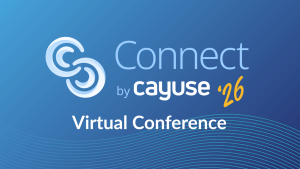Blog
What is Administrative Burden in Research, and How Can You Reduce It?
- Healthcare
- Higher Education
- Life Sciences
- Nonprofit
Research-related administrative burden is a hot topic, from what those administrative burdens are to how to handle them.
Over the past 30 years, there have been more than 50 new regulations that directly affect federally funded research management. (That doesn’t even include changes to existing regulations!)
Those changes translate to administrative burden for research organizations. “Administrative burden” is the extra time and energy required for non-research-related tasks, like sending and reading emails, printing, mailing, filing, setting up meetings, making phone calls, creating spreadsheets, getting signatures, and sometimes even sending faxes (!).
Administrative burden comes from not only implementing new regulations, but also figuring out how to interpret them, since the wording can be confusing or vague sometimes. In order to address that, research organizations have created new groups and devoted significant time in existing groups.
Some of these groups have done studies to evaluate how these new and revised regulations are affecting research organizations. This blog post will cover some of those groups and their studies, key areas that each saw as the most burdensome for research administration, and ways to assist in some of the more troublesome areas.
Groups, their studies, and their findings
The National Science Board (NSB)
The NSB formed the Task Force on Administrative Burdens, which found the following top reported burdens in their report:
- Financial management
- Proposal preparation and submission
- Required reports: progress reports and others
- Effort reporting
Federation of American Societies for Experimental Biology (FASEB)
The FASEB conducted a survey that found these top reported areas of administrative burden:
- Proposal preparation and submission
- Personnel management
- Effort reporting
- Financial tracking and reporting
Federal Demonstration Partnership (FDP)
The FDP conducted a survey that focused on how faculty conducting research spent their time when focused on their research efforts. The survey found that time was spent on the following activities:
- 7% on active research
- 4% on proposal preparation
- 6% on post-award administration
- 6% on report preparation
- 7% on pre-award administration
Conclusions from reports
As you can see from these reports, the overlapping areas of burden are proposal preparation and submission and post-award activities such as creating reports, managing finances, managing personnel and reporting effort. The reports and surveys found other time-consuming activities such as compliance (humans, animals, etc.), monitoring subcontracts, and the growing amount of training requirements, but those noted above were at or near the top of each list.
How to reduce administrative burden
Most research organizations find that the best way to help alleviate these administrative burdens is to adopt electronic research administration (eRA) solutions, particularly those based in the cloud. But for a solution to be truly helpful, it must be easy to use, always evolving (as this landscape continually does), and assist in relieving the burdens, not add to them. Cayuse offers a variety of solutions to assist with these key burdens:
- Financial management
- Proposal preparation and submission
- Effort reporting
- Financial tracking and reporting
- Personnel management
Our solutions are innovative, easy to use, constantly evolving, diverse in report selection, well-supported by an implementation staff with research administration experience, and competitively priced. For more information, contact our team today!

